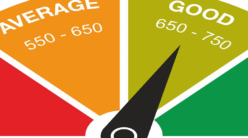The PMAW, or Pradhan Mantri Awas Yojana, is the communal welfare scheme introduced in 2015 by the Indian Government. The main purpose of this Yojna is to offer housing in urban areas. Through the initiative, the Government will accomplish the mission of housing in urban areas by the end of 2022.
This initiative offers central assistance with the credit-linked subsidy scheme via implementing agencies, including banks. Here is the prime objective of the Yojna.

Main Objective of Pradhan Mantri Awas Yojana
Over a few yesterday years in India, a constant surge in land and property prices have been witnessed. It is true for individuals who reside in metropolitan cities. Note that they have witnessed around a 38% jump in property prices. There are significant reductions in affordability. That’s what encourages affordable and sustainable housing for urban people. For them, this scheme was introduced.
As per the objective, Pradhan Mantri Awas Yojana focuses on building more real estate using environmentally friendly construction materials. The prime objective behind this Yojna is to ensure minimum environmental damage. It also aims for less sound and air pollution. Through different incentives and measures, the Yojna aims to address the housing needs of poor urban people, such as slum dwellers and other weaker sections of society. Here are the four elements of the Yojna.
4 Elements of the PMAY Scheme
PMAY-U or PMAY- Urban comprises three prime schemes where a loan interest subsidy is available for all individuals who belong to:
- EWS or economically weaker sections (EWS),
- Lower Income Group or LIG
- Middle Income Group or MIG
Here are the four elements of this scheme:
1. “In-situ” using land as a Resource
It’s the most significant element, and the approach intends to redevelop slums using land as a resource with the collaboration of the private sector. This objective focuses on leveraging the locked potential of the land under slum areas.
Considering the guidelines, this scheme aims to provide grants of INR 1 lakh per real estate on average for houses designed for eligible people (slum dwellers).
2. AHP or Affordable Housing in Partnership
Indian Government has approved this Yojna that comprises affordable housing in collaboration with the public and private sectors. This scheme focuses on offering affordable housing to underprivileged sections. Preference considering allotment might be offered if the person has physical disabilities or is a senior citizen. Also, SCs &STs and other backward sections of this society will have certain advantages. Under AHP, there are a minimum of 250 homes, with around 35% houses in the EWS category.
3. Subsidiary for Beneficiary-led Enhancement and Construction
This particular component can assist families of EWS in improving their houses or even contrasting newer ones. It aims to offer financial assistance to the EWS houses having been built in different partnership models by the Union or States Territories. Each of these houses comes with central assistance of a minimum of INR 1.5 lakh.
4. Affordable Real Estate via Credit-Linked Subsidy
A significant benefit of this scheme is CLSS. It enables EWS, LIG, MIG-1, and MIG-2beneficiaries to receive house loans for acquisitions or construction at low-interest rates. The scheme beneficiaries are eligible for interest subsidy when they wish to buy or construct a new home by opting for a loan. It is applicable even when they wish to add more rooms to their existing houses, such as a kitchen, a washroom, or another room.
Under this Yojna, the Indian Government will offer 3%, 4%, and 6.5%interest subsidies on loan amounts of 6 lakh, INR 9 lakh & INR 12 lakh.
The mentioned group members may receive a substantial increase in any interest payment. To manage this progress and channelize a subsidy to beneficiaries via lending institutions, the ministry has now designated the following:
- NHB or National Housing Bank
- HUDCO or Housing and Urban Development Corporation, and
- SBI or State Bank of India.
One quick note:
Along with the components, a new element has also been added after the COVID-19 outbreak. On June 14, 2020, the Union cabinet comprehended the requirement for affordable rental housing schemes. So, they have come up with a sub-scheme under PMAY.
The prime objective behind this scheme is to assist poor urban migrants with decent and secure rental housing solutions at affordable prices. It aims to offer rental houses in proximity to their workplaces. This motive caters to safeguarding their employment opportunities in India.
Considering the PMAY eligibility, any household with an annual income that ranges from Rs. 3 lakhs to 18 lakhs might apply. The applicant or their family member should not have a pucca house. The recipient can’t benefit from the scheme for an already existing constructed building. The beneficiary can apply for a loan that takes around 2 to 6 months to get a subsidy in the loan account.





